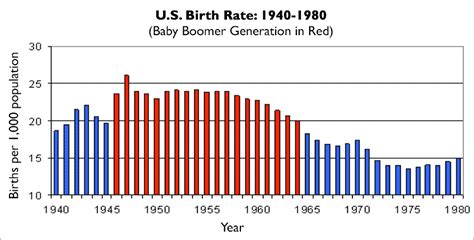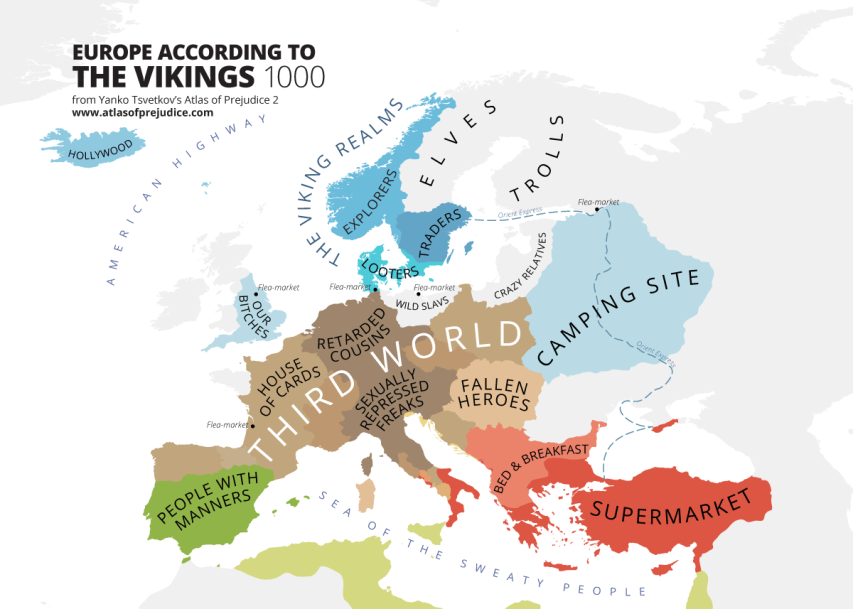I like living in a society where women are, generally speaking, as free to choose their own path in life as I am. I like strong women, women who are confident and look me in the eye and see themselves as my equals. But I wonder, sometimes, if sexual equality isn’t doomed by biology. The relevant facts are (a) men and women have different optimal reproductive strategies because of the asymmetry in energy investment – being pregnant and giving birth is a lot more costly and risky than ejaculating, and (b) a woman’s fertile period is a relatively short portion of her lifetime. Following the logic out, it may be that the consequence of sexual equality is demographic collapse — nasty cultures which treat women like brood mares are the future simply because the nice cultures that don’t do that stop breeding at replacement rates.
Eric S. Raymond, “Fearing what might be true”, Armed and Dangerous, 2009-10-23.
January 10, 2021
QotD: Sexual equality and the risk of demographic collapse
November 9, 2020
QotD: The Children of Men becomes disturbingly real in Japan
To western eyes, contemporary Japan has a kind of earnest childlike wackiness, all karaoke machines and manga cartoons and nuttily sadistic game shows. But, to us demography bores, it’s a sad place that seems to be turning into a theme park of P.D. James’ great dystopian novel The Children Of Men. Baroness James’ tale is set in Britain in the near future, in a world that is infertile: The last newborn babe emerged from the womb in 1995, and since then nothing. It was an unusual subject for the queen of the police procedural, and, indeed, she is the first baroness to write a book about barrenness. The Hollywood director Alfonso Cuarón took the broad theme and made a rather ordinary little film out of it. But the Japanese seem determined to live up to the book’s every telling detail.
In Lady James’ speculative fiction, pets are doted on as child-substitutes, and churches hold christening ceremonies for cats. In contemporary Japanese reality, Tokyo has some 40 “cat cafés” where lonely solitary citizens can while away an afternoon by renting a feline to touch and pet for a couple of companiable hours.
In Lady James’ speculative fiction, all the unneeded toys are burned, except for the dolls, which childless women seize on as the nearest thing to a baby and wheel through the streets. In contemporary Japanese reality, toy makers, their children’s market dwindling, have instead developed dolls for seniors to be the grandchildren they’ll never have: You can dress them up, and put them in a baby carriage, and the computer chip in the back has several dozen phrases of the kind a real grandchild might use to enable them to engage in rudimentary social pleasantries.
P.D. James’ most audacious fancy is that in a barren land sex itself becomes a bit of a chore. The authorities frantically sponsor state porn emporia promoting ever more recherché forms of erotic activity in an effort to reverse the populace’s flagging sexual desire just in case man’s seed should recover its potency. Alas, to no avail. As Lady James writes, “Women complain increasingly of what they describe as painful orgasms: the spasm achieved but not the pleasure. Pages are devoted to this common phenomenon in the women’s magazines.”
As I said, a bold conceit, at least to those who believe that shorn of all those boring procreation hang-ups we can finally be free to indulge our sexual appetites to the full. But it seems the Japanese have embraced the no-sex-please-we’re-dystopian-Brits plot angle, too. In October, Abigail Haworth of The Observer in London filed a story headlined “Why Have Young People in Japan Stopped Having Sex?” Not all young people but a whopping percentage: A survey by the Japan Family Planning Association reported that over a quarter of men aged 16–24 “were not interested in or despised sexual contact.” For women, it was 45 per cent.
Mark Steyn, The [Un]documented Mark Steyn, 2014.
October 22, 2020
When England “Londonized”
In the latest Age of Invention newsletter, Anton Howes looks at changes in urbanization in England from the Middle Ages onward and the astonishing growth of London in particular:

John Norden’s map of London in 1593. There is only one bridge across the Thames, but parts of Southwark on the south bank of the river have been developed.
Wikimedia Commons.
We must thus imagine pre-modern England as a land of tens of thousands of teeny tiny villages, each having no more than a couple of hundred people, which were in turn served by hundreds of slightly larger market towns of no more than a few hundred inhabitants, and with only a handful of regional centres of more than a few thousand people. By the 1550s, the country’s population had still not recovered to its pre-Black Death peak, and still only about 4% of the population lived in cities. London alone accounted for about half of that, with approximately 50-70,000 people (about five times the size of its closest rival, Norwich). So after a couple of centuries of recovery, London was only a little past its medieval peak.
But over the following century and a half, things began to change. At first glance, England’s continued population growth was unremarkable. By 1700, its overall population had finally reached and even surpassed the medieval 5 million barrier, despite the ravages of civil war. This was, perhaps, to be expected, with a little additional agricultural productivity allowing it to surpass the previous record. But the composition of that population had changed radically, largely thanks to the extraordinary growth of London. England’s overall population had not only recovered, but now 16% of them lived in cities of over 5,000 inhabitants — over two thirds of whom lived in London alone. Rather than simply urbanise, England londonised. By 1700, the city was nineteen times the size of second-place Norwich — even though Norwich’s population had more or less tripled.
London had, by 1700, thus risen from obscurity to become one of the largest cities in Europe. At an estimated 575,000 people, it was rivalled in Europe only by Paris and Constantinople, both of which had been massive for centuries. And although by modern standards it was still rather small, it could at least now be comfortably called a city — more or less on par with the populations of modern-day Glasgow or Baltimore or Milwaukee.
During that crucial century and a half then, London almost single-handedly began to urbanise the country. Its eighteenth-century growth was to consolidate its international position, such that by 1800 the city was approaching a million inhabitants, and from the 1820s through to the 1910s was the largest city in the world. In the mid-nineteenth century England also finally overtook Holland in terms of urbanisation rates, as various other cities also came into their own. But this was all just the continuation of the trend. London’s growth from 1550 to 1700 is the phenomenon that I think needs explaining — an achievement made all the more impressive considering how many of its inhabitants were dropping dead.
Throughout that period, urban death rates were so high that it required waves upon waves of newcomers from the countryside to simply keep the population level, let alone increase it. London was ridden with disease, crime, and filth. Not to mention the occasional mass death event. The city lost over 30,000 souls — almost of a fifth of its population — in the plague of 1603 (which was apparently exacerbated by many thousands of people failing to social distance for the coronation of James I), followed by the loss of a fifth again — 41,000 deaths — in the plague of 1625, and another 100,000 deaths — by now almost a quarter of the city’s population — in 1665. And yet, between 1550 and 1700 its population still managed to increase roughly tenfold.
I’ve been hard-pressed to find an earlier, similarly rapid rise to the half-a-million mark that was not just a recovery to a pre-disaster population or simply the result of an empire’s seat of government being moved. Chang’an, Constantinople, Ctesiphon, Agra, Edo, for example — all owed their initial, massive populations to an administrative change (often accompanied by a degree of forcible relocation), and all then grew fairly gradually up to or beyond half a million. As for a very long-term capital like Rome, it seems to have taken about three or four centuries to achieve the increases that London managed in just one and a half (though bear in mind just how rough and ready our estimates of ancient city populations are — our growth guesstimate for Rome is almost entirely based on the fact that the water supply system roughly doubled every century before its supposed peak). The rapidity of London’s rise from obscurity may thus have been unprecedented in human history — and was certainly up there with the fastest growers — though we’ll likely never know for sure.
But how? I can think of a multitude of factors that may have helped it along, but I find that each of them — even when considered altogether — aren’t quite satisfactory.
September 23, 2020
QotD: Don’t blame the Boomers for the “Summer of Love” … most of ’em were too young to participate
I’ve written a lot here about how the most dangerous types in peacetime are the ones who juuuuust missed participating in some vast social upheaval. The Nazis are an obvious example. The Nazi-est Nazis of them all — Himmler, Heydrich, Eichmann, etc. — were old enough to have seen and understood the great national cataclysm that was World War I, but weren’t quite old enough to participate in it directly. Thus, when their turn came, they had to go double-or-nothing to prove to their older kin and classmates that they had what it takes. In America, guys like Teddy Roosevelt don’t make much sense until you realize that they grew up hearing their fathers and older brothers reminisce about the Civil War. And so on.
Now, I’m all for bashing the goddamn Boomers, but let’s be fair (since it matters for historical analysis). There’s a common misconception about the Baby Boom. Here, see if you can spot it:
Did you see it? Look closer, and you’ll see that while 1947(-ish) appears to be the peak year in terms of total births, the vast majority of what we call “Boomers” were born after 1950. Let’s do some simple math. The very oldest Boomers were born in 1946. The Summer of Love was 1967. Even if we assume the Summer of Love came out of nowhere — which is impossible, of course, any movement that large had antecedents going back years, probably decades, but let’s assume — that means that any “Boomers” participating were, at most, barely 22 years old. They were just barely 24 when Woodstock came around. Granted that the youngest are the dumbest, and thus can have outsize influence, they still can’t have been largely, let alone solely, responsible for the idiocy of the hippies.
That’s all on the older crowd, the so-called “Silent Generation” — the ones who were old enough to be aware of World War II, but unable to participate directly.
It’s easy to verify. The Port Huron Statement, the founding document of the New Left, was penned by coddled college kids in 1962 — meaning, by kids born, at latest, in about 1942 (its principal author, Tom Hayden, was born in 1939). Here are the Chicago Seven and their dates of birth: Abbie Hoffman (1936), Jerry Rubin (1938), David Dellinger (1915!), Hayden, Rennie Davis (1941),John Froines (1939), and Lee Weiner (1939).
Hoffman, especially, bears scrutiny. Though he’s best remembered as a Yippie — that is, the founder of an ostentatiously youth-oriented movement — he was 31 at its founding. Don’t trust anyone over thirty, right?
1936 to 1946 is only a decade, but it’s crucial. A kid born in 1936 would have vivid memories of World War II and its immediate aftermath — fathers, uncles, and older brothers (and, in more than a few cases, aunts and older sisters) coming home from the service. A kid born in 1946 would have a completely different experience — ask any combat veteran about the first year or two back in the world, versus being home for a decade. Those guys — the kids who saw firsthand the angry young strangers they were supposed to call “Dad” — were the ones who did the real damage in The Sixties(TM), just as it was the almost-but-not-quite frontsoldaten who did the real damage in the Third Reich.
With me? Now hang on to your hats, because here’s where it gets pretty meta: It was the “Silent Generation,” not the Boomers, who did the real damage in The Sixties(TM). That is, the guys who juuuust missed the giant social upheaval that was World War II. The Boomers have done all the damage since The Sixties(TM).
That — The Sixties(TM), which is why I’m using that obnoxious (TM) — is the great social upheaval they juuuust missed. [These people] aren’t old fossils from the flower power years, though many of those fossils are still alive and kicking (including four of the Chicago Seven: Hayden, Davis, Froines, and Weiner). Has anyone heard from Billy Ayers lately? How about Noam Chomsky (born 1928)? I’m sure they have plenty to say … but nobody cares.
It’s not retreads from The Sixties(TM) out there doing this stuff. It’s the people who wish they’d been around for the Summer of Love that are doing it. It’s the people who just know they would’ve ended the Vietnam War, if only they hadn’t been in junior high at the time. This is their Woodstock, not least because they only heard about the original when they arrived for freshman orientation in 1976.
Severian, “Talkin’ ’bout My Generation!”, Rotten Chestnuts, 2020-06-11.
August 8, 2020
Andrew Sullivan – “[T]he Kendi test: does the staff reflect the demographics of New York City as a whole?”
In his latest Weekly Dish, Andrew Sullivan looks at an earnest diversity initiative of The Newspaper Guild of New York:
I’m naming this after Ibram X. Kendi because his core contribution to the current debate on race is the notion that “any measure that produces or sustains racial inequity between racial groups” is racist. Intent is irrelevant. I don’t think many sane people believe A.G. Sulzberger or Dean Baquet are closet bigots. But systemic racism, according to Kendi, exists in any institution if there is simply any outcome that isn’t directly reflective of the relevant racial demographics of the surrounding area.
The appeal of this argument is its simplicity. You can tell if a place is enabling systemic racism merely by counting the people of color in it; and you can tell if a place isn’t by the same rubric. The drawback, of course, is that the world isn’t nearly as simple. Take the actual demographics of New York City. On some measures, the NYT is already a mirror of NYC. Its staff is basically 50 – 50 on sex (with women a slight majority of all staff on the business side, and slight minority in editorial). And it’s 15 percent Asian on the business side, 10 percent in editorial, compared with 13.9 percent of NYC’s population.
But its black percentage of staff — 10 percent in business, 9 percent in editorial — needs more than doubling to reflect demographics. Its Hispanic/Latino staff amount to only 8 percent in business and 5 percent in editorial, compared with 29 percent of New York City’s demographics, the worst discrepancy for any group. NYT’s Newsroom Fellowship, bringing in the very next generation, is 80 percent female, 60 percent people of color (including Asians), and, so far as I can tell, one lone white man. And it’s why NYT‘s new hires are 43 percent people of color, a definition that includes Asian-Americans.
But notice how this new goal obviously doesn’t reflect New York City’s demographics in many other ways. It draws overwhelmingly from the college educated, who account for only 37 percent of New Yorkers, leaving more than 60 percent of the city completed unreflected in the staffing. It cannot include the nearly 19 percent of New Yorkers in poverty, because a NYT salary would end that. It would also have to restrict itself to the literate, and, according to Literacy New York, 25 percent of people in Manhattan “lack basic prose literary skills” along with 37 percent in Brooklyn and 41 percent in the Bronx. And obviously, it cannot reflect the 14 percent of New Yorkers who are of retirement age, or the 21 percent who have yet to reach 18. For that matter, I have no idea what the median age of a NYT employee is — but I bet it isn’t the same as all of New York City.
Around 10 percent of staffers would have to be Republicans (and if the paper of record nationally were to reflect the country as a whole, and not just NYC, around 40 percent would have to be). Some 6 percent of the newsroom would also have to be Haredi or Orthodox Jews — a community you rarely hear about in diversity debates, but one horribly hit by a hate crime surge. 48 percent of NYT employees would have to agree that religion is “very important” in their lives; and 33 percent would be Catholic. And the logic of these demographic quotas is that if a group begins to exceed its quota — say Jews, 13 percent — a Jewish journalist would have to retire for any new one to be hired. Taking this proposal seriously, then, really does require explicit use of race in hiring, which is illegal, which is why the News Guild tweet and memo might end up causing some trouble if the policy is enforced.
And all this leaves the category of “white” completely without nuance. We have no idea whether “white” people are Irish or Italian or Russian or Polish or Canadians in origin. Similarly, we do not know if “black” means African immigrants, or native black New Yorkers, or people from the Caribbean. 37 percent of New Yorkers are foreign-born. How does the Guild propose to mirror that? Ditto where staffers live in NYC. How many are from Staten Island, for example, or the Bronx, two places of extremely different ethnic populations? These categories, in other words, are incredibly crude if the goal really is to reflect the actual demographics of New York City. But it isn’t, of course.
My point is that any attempt to make a specific institution entirely representative of the demographics of its location will founder on the sheer complexity of America’s demographic story and the nature of the institution itself. Journalism, for example, is not a profession sought by most people; it’s self-selecting for curious, trouble-making, querulous assholes who enjoy engaging with others and tracking down the truth (at least it used to be). There’s no reason this skillset or attitude will be spread evenly across populations. It seems, for example, that disproportionate numbers of Jews are drawn to it, from a culture of high literacy, intellectualism, and social activism. So why on earth shouldn’t they be over-represented?
And that’s true of other institutions too: are we to police Broadway to make sure that gays constitute only 4 percent of the employees? Or, say, nursing, to ensure that the sex balance is 50-50? Or a construction company for gender parity? Or a bike messenger company’s staff to be reflective of the age demographics of the city? Just take publishing — an industry not far off what the New York Times does. 74 percent of its employees are women. Should there be a hiring freeze until the men catch up?
July 28, 2020
How Matt Ridley stopped being an “Enviro-Pessimist”
It was human ingenuity that did it for him:

Spiti Valley in the Great Himalayan National Park. (The little blue speck in the middle of the photo is a truck, for scale.)
Photo by Sudhanshu Gupta via Wikimedia Commons.
If you had asked me in 1980 to predict what would happen to that bird and its forest ecosystem, I would have been very pessimistic. I could see the effect on the forests of growing human populations, with their guns and flocks of sheep. More generally, I was marinated in gloom by almost everything I read about the environment. The human population explosion was unstoppable; billions were going to die of famine; malaria and other diseases were going to increase; oil, gas, and metals would soon run out, forcing us to return to burning wood; most forests would then be felled; deserts were expanding; half of all species were heading for extinction; the great whales would soon be gone from the oil-stained oceans; sprawling cities and modern farms were going to swallow up the last wild places; and pollution of the air, rivers, sea, and earth was beginning to threaten a planetary ecological breakdown. I don’t remember reading anything remotely optimistic about the future of the planet.
Today, the valleys we worked in are part of the Great Himalayan National Park, a protected area that gained prestigious World Heritage status in 2014. The logo of the park is an image of the western tragopan, a bird you can now go on a trekking holiday specifically to watch. It has not gone extinct, and although it is still rare and hard to spot, the latest population estimate is considerably higher than anybody expected back then. The area remains mostly a wilderness accessible largely on foot, and the forests and alpine meadows have partly recovered from too much grazing, hunting, and logging. Ecotourism is flourishing.
This is just one small example of things going right in the environment. Let me give some bigger ones. Far from starving, the seven billion people who now inhabit the planet are far better fed than the four billion of 1980. Famine has pretty much gone extinct in recent decades. In the 1960s, about two million people died of famine; in the decade that just ended, tens of thousands died — and those were in countries run by callous tyrants. Paul Ehrlich, the ecologist and best-selling author who declared in 1968 that “[t]he battle to feed all of humanity is over” and forecast that “hundreds of millions of people will starve to death” — and was given a genius award for it — proved to be very badly wrong.
Remarkably, this feeding of seven billion people has happened without taking much new land under the plow and the cow. Instead, in many places farmland has reverted to wilderness. In 2009, Jesse Ausubel of Rockefeller University calculated that thanks to more farmers getting access to better fertilizers, pesticides, and biotechnology, the area of land needed to produce a given quantity of food — averaged for all crops — was 65 percent less than in 1961. As a result, an area the size of India will be freed up by mid-century. That is an enormous boost for wildlife. National parks and other protected areas have expanded steadily as well.
Nor have these agricultural improvements on the whole brought new problems of pollution in their wake. Quite the reverse. The replacement of pesticides like DDT with much less harmful ones that do not persist in the environment and accumulate up the food chain, in addition to advances in biotechnology, has allowed wildlife to begin to recover. In the part of northern England where I live, otters have returned to the rivers, and hawks, kites, ospreys, and falcons to the skies, largely thanks to the elimination of organochlorine pesticides. Where genetically modified crops are grown — not in the European Union — there has been a 37 percent reduction in the use of insecticides, as shown by a recent study done at Gottingen University.
One of the extraordinary features of the past 40 years has been the reappearance of wildlife that was once seemingly headed for extinction. Bald eagles have bounced back so spectacularly that they have been taken off the endangered list. Deer and beavers have spread into the suburbs of cities, followed by coyotes, bears, and even wolves. The wolf has now recolonized much of Germany, France, and even parts of the heavily populated Netherlands. Estuaries have been cleaned up so that fish and birds have recolonized rivers like the Thames.
June 28, 2020
“Viking” was the word for “Incel” in the early Middle Ages
At least, that’s one interpretation offered by Mary Harrington at UnHerd:
Last week, World War 3 nearly started in Ladakh. A dry, high-altitude region of Indian Kashmir on the Himalayan border with China, it’s been the site of escalating tensions and military buildup for some time. On June 15, the first physical confrontation between the Indian and Chinese militaries for 45 years erupted, killing at least 20 Indian and 45 Chinese soldiers.
There are all sorts of geopolitical reasons cited for the escalating tension between the world’s two most populous countries, but there is one more central and timeless problem that is going to drive both countries towards violence and instability — women. Or a lack of them.
In his History of the Normans, written circa 1015, Dudo of St Quentin argued that the reason the Vikings went raiding was because they couldn’t find wives, an idea echoed by the Tudor antiquarian William Camden in his 1610 book Britannia. “Wikings”, Camden suggested, were what you got when there weren’t enough women to go round, resulting in an excess of young men hanging around full of machismo but without any prospect of finding a nice girl and settling down. (Viking literally means raider.)
So, whenever these spare males “multiply’d themselves to a burdensom community”, Camden reports that an area would draw lots. Those of the young troublemakers chosen in the lottery would be sent off on a ship to make a nuisance of themselves overseas. Which they did.
In evolutionary biology, the “operational sex ratio” is a term used to count the proportion of males and females in a given species that are seeking a reproductive mate. As soon as the ratio tilts away from 50:50, the sex that’s over-represented will have to compete to secure a mate from among the less-plentiful potential partners of the opposite sex.
Though they wouldn’t have used that phrase, both Dudo of St Quentin and William Camden were both describing this phenomenon in human males. Where potential wives are scarce and the “burdensom community” of spare men multiplies, the result is more violence and crime. One 2019 study showed that where polygyny — that is, multiple wives — is a social norm for higher-status men, attacks on neighbouring ethnic groups skyrocket. With a few men monopolising eligible women, the rest are forced to seek status and resources by attacking other tribes.
India and China both have an extremely “burdensom community” of spare males. The normal ratio of newborn boys to girls is around 105:100. But as Mara Hvistendahl documents in Unnatural Selection, thanks to prenatal ultrasound and sex-selective abortion the ratio in China is around 118:100, and 108:100 in India. In some regions of India, the ratio rises as high as 150 males to 100 females. Though sex-selective technology is now banned in India, it’s still widespread, and the country now has some 37 million more men than women. Studies estimate that China has around 30 million excess men.
February 28, 2020
A history lesson from Roman Thessalonika
At Samizdata, Niall Kilmartin recounts a story that has some interesting modern parallels for those who choose to look:

The Course of Empire – Destruction by Thomas Cole, 1836.
From the New York Historical Society collection via Wikimedia Commons.
It happened in Thessalonika near the end of the Roman Empire.
The empire had been in trouble for some time. It was not reproducing itself – “The human harvest was bad” (Seeley). “Agri Deserti” – once-cultivated lands now abandoned for lack of people to till them – could be found in every province.
Internally, the empire tried its usual solution: more government, more laws, more force. Legislation to reward large families and tax bachelors was kept on the statute books for centuries although “successful it was not” (Power). As the empire waned, laws to deal with the consequence of this failure were added: binding cultivators to the soil (the origin of serfdom) was merely the most common example of assigning a hereditary obligation to more and more of the professions the state relied on as soon as a shortfall appeared in them, legally punishing any son who did not follow in his father’s footsteps. To draft and regulate these laws, the numbers and privileges of bureaucrats ballooned from Rome’s former proportion (though still small by our standards).
Successful all these laws were not – so, externally, the empire addressed its chronic shortage of manpower by immigration,
to dose it with barbarian vigour. Just a small injection to begin with and then more and more
Goths arrived, first as recruits to Roman army units, then as foederate units under their own leaders, growing like a cancer within the armed forces until an Egyptian mother quite naturally wrote the emperor to return her citizen son who “has gone off with the barbarians” – by which she meant he had joined the “Roman” army.
Emperor Theodosius made the Goths obey him, but his was an insecure authority over them. He used Gothic troops in battles where pyrrhic victories may have been welcome. As one summary of the costly victory of Frigidius (394 AD) puts it,
The loss of 10,000 Goths cannot have distressed Theodosius unduly.
Theodosius also had little choice but to use some of their leaders as governors. Mostly, the empire’s soldiers were also its police – so the leaders of those who were now increasingly providing those soldiers had to be both rewarded by, and used in, such posts. Thus did Butheric the Goth became governor (magister militum) over Illyricum, which included Thessalonika.
The urban elite of Thessalonika were university-educated Greeks.
It would be hard to imagine an education less suited to help them understand the dangers they faced. The study of rhetoric, its links with reality long severed, …
So Eileen Power described the “learned” of the dying Roman world. (Today, 8 decades after she wrote those sentences, it is easier to imagine an education even less suited to helping elite intellectuals understand the dangers facing them, one whose links with reality are even more completely severed.) In the empire’s second century, Hadrian had dispersed those Jews he did not kill around the empire, confident they’d soon lose their primitive prejudices and assimilate to being broad-minded Graeco-Roman intellectuals like himself. Fourth/fifth century Graeco-Roman intellectuals thought the same of the immigrants. Sidonius Appolinaris wrote a “good-natured” description of the “embarrassing friendliness” of the new barbarian neighbours he encountered on a fifth-century visit to Lyons:
“How can he be expected to compose six-foot metres”, [Sidonius] asks, “with so many seven-foot patrons all around him, all singing and all expecting him to admire their uncouth stream of non-Latin words.”
The shrug of the shoulders, the genial contempt of one conscious of an infinite superiority – how familiar it all seems.
Perhaps the Thessalonikan city leaders greeted their new governor in this spirit, as sure as Hadrian was about the Jews that this uncouth Goth would soon lose his barbaric prejudices.
February 13, 2020
Here’s a deceptive factoid … time for you to get angry to suit someone’s political agenda
Did you know that “Three Billionaires Have More Wealth Than Half of America”!!!???!!! Are you angry now? You’re supposed to be, because this factoid was concocted specifically to make people irrationally angry. Daniel C. Jensen explains how this sound bite was created:
People between 0 and 24 years of age account for about 32 percent of the United States population of 320 million. Almost all of them are going to be in the bottom half of the wealth distribution for reasons including diaper rash and puberty. That means they account for about 63 percent of the “bottom half of the wealth distribution.” Should it surprise us that some kid fresh out of college does not “hold any stocks or bonds”? Or a kid fresh out of the womb?
Then we must consider people with mental and physical disabilities. They will also tend to be in the bottom half of the wealth distribution because they face greater challenges to building wealth. “About 56.7 million people — 19 percent of the population — had a disability” at last count, according to the United States Census Bureau. But there is overlap between the disabled 19 percent and the young 32 percent of the population. If we assume disabilities are evenly distributed in the population, then young people and non-young disabled people account for 45 percent of the population. So we have now accounted for 90 percent of the “160 million Americans in the bottom half of the wealth distribution.”
Next, we must think about other groups who have had limited wealth-building opportunities. What about the 2.2 million people in jail and prison? What about people in their late twenties who pursued PhDs, law degrees, medical residencies, etc., and are just beginning their careers? Now we are close to accounting for 100 percent of the “bottom half of the wealth distribution.” But this wealth distribution is not what any sensible person would expect it to be.
Maybe the factoid is true. Maybe Jeff Bezos, Bill Gates, and Warren Buffet have more wealth than all of the infants, children, students, handicapped, prisoners, and postgrads combined. But you don’t need a PhD to figure out that’s not useful knowledge. Even if the factoid is true, it’s deceitful. Whoever created it was obviously trying to manipulate people. And we uncovered this deception with nothing but some simple knowledge of the US population.
Next time you encounter an economic factoid, remember that it might be pitting a bunch of newborns against Jeff Bezos, and that hardly seems fair. Thankfully, you can save those babies from certain defeat simply by knowing some basic statistics about your country.
December 16, 2019
QotD: The Great Pestilence of 1348
Long I have been curious about the Great Pestilence that trimmed the population of Britain and Europe by a third or more, in the fourteenth century. I make too much of it; the plague was a recurring event for centuries before and after. I notice from the tabloids that it is returning, through Africa this time. I know there will be pestilence to come, when we will all think it terribly important. It rivetted attention, I’m sure, in the autumn of 1348, and through the summer of 1349. And yet within a generation it is hardly mentioned.
England, below the Ribble and Tees, is special, thanks to the Domesday Book of the invading, tax-loving Normans, and their general propensity to good record-keeping. The towns and villages ennumerated in 1086 can be traced to the present day; nineteen in twenty are still there. Having figures to start, and through the parish books later, we can track an economic and demographic history with an accuracy possible in no other country. We can know, for instance, of the population boom through the twelfth and thirteenth centuries, which had slackened well before the “Black Death.” And with that boom, impressive advances in farming, technology, and building, as today. Nothing conduces to technical improvement, as a bit of crowding.
This proportion I cited — the nineteen-in-twenty (or more) — which I have from reading in economic history mostly years ago, fascinates my attention. We know large tracts were depopulated, we find the archaeological evidence easily enough. They were planting rye within the walls of Winchester, and many other towns. Everywhere, they had elbow-room again. Our deep ecologists would have been pleased — those who think life on this planet would be better had a few billion souls not been born. As Christianity, and environmentalism, are mortally opposed, and the fourteenth century was overwhelmingly Christian, I expect complaints of overpopulation were differently expressed at the time. Mostly it would have been moaning from younger brothers about the distribution of inherited land.
Always, there have been younger brothers. Always, there have been survivors. What delighted me was the speed with which all the vacant places were filled. As we’ve seen, too, after ghastly wars, demography abhors a vacuum.
David Warren, “Death the real illusion”, Essays in Idleness, 2017-11-04.
June 22, 2019
QotD: Militant Islam and the arts
What I’ve learned since 9/11 is that the small pleasures — music, theatre, film — have to be earned. In the Muslim world, there is no music. In Libya they destroyed all the musical instruments — music was considered an abomination. When the demography changes, there will be no concert halls. Artists who take a multicultural view should be aware of this. Count the number of covered women in London’s West End. In Birmingham, where I went to high school, you have a provincial symphony orchestra in a Muslim city — I’m not sure it will survive. All art, all popular culture, is endangered by Islam, because there’s no room for it. It’s considered libertinism. And I’m not even talking about Miley Cyrus twerking at the music awards. What turned Sayyid Qutb against the morality of the West is that he attended a church dance in Greeley, Colorado, which was a dry town in 1948, and he heard the song “Baby, It’s Cold Outside”. He thought it was evil. And now things are getting a lot worse. Ugly things are happening.
Mark Steyn, interviewed by John Bloom, “Mark Steyn, Cole Porter and Free Speech”, Quadrant, 2017-05-11.
May 25, 2019
India’s “Modi generation”
Mihir Swarup Sharma discusses the demographic, political, and social impact of India’s most influential generation:

Israeli President Reuven Rivlin and IDF Chief of General Staff Gadi Eizenkot meet with Indian Prime Minister Narendra Modi, in Jerusalem, July 5, 2017.
Photo by Mark Neyman / GPO via Wikimedia Commons.
The Modi generation, which is and will be India’s most influential ever, will reshape this country the way that other demographic bulges — think of the US’ Baby Boomers — have done so elsewhere. Their India will be substantively different, in terms of domestic and global politics, than that which has come before.
What might this India look like? First, it will be impatient. Young people are less willing to wait for national glory. In the People’s Republic of China, the rule for the country, set by Deng Xiaoping, was to “bide your time and hide your strength”. Xi Jinping’s China, where the agenda is being set to appease a generation of young single men, has abandoned Deng’s maxim. This will be even more true for India, which is after all a democracy that must respond to the most powerful voting bloc in its history. It will be impatient about economics as well. Young Indians expect a better life soon. Today they are willing to give Modi some more time to achieve it. But, in the years to come, that patience will run out.
Second, it will be aggressive. India can no longer “hide its strength”. That was the lesson we must take from the political salience in this election of Balakot, of the promise by the ruling party to enter their houses and kill India’s enemies. A national machismo is the natural consequence of a bulge of young, unemployed and unemployable men. India is perhaps less able to sustain this aggressiveness than, say, China. But the times in which India would be able to absorb terrorist attacks, for example, without a major pushback have passed.
Third, it will be a risk-taker. Young people have a belief in their own invincibility, and Indian policy will be forced to reflect this. Others might argue demonetisation was a foolish mistake; but what matters to many voters is that Modi took a risk, and according to them in a good cause. The Balakot air strike on Pakistan may not have achieved a fundamental strategic transformation of the India-Pakistan relationship (though some experts disagree) but it played well politically because it was not just a demonstration of strength as a nation, but an example of a tolerance to risk. In this sense, the notion of Indian leadership has become one of risk-taking; Manmohan Singh was pilloried for caution and “silence”, Modi is considered an epochal leader because he takes risks.
February 19, 2019
Judging a book by its cover (or people by their appearance)
In the latest Libertarian Enterprise, Sean Gabb reviews How to Judge People by What They Look Like, by Edward Dutton:
This short book is equally naughty and entertaining. It bounces along, making its points in a light-hearted and generally a witty manner. It is naughty so far as it is a flat challenge to many of the pieties of our age.
We are told never to judge a book by its cover — that the substance of a person, this being character and intelligence, have no measurable relationship to his external form, this being his physical appearance. At the extreme, of looking at correlations between race and intelligence, you can get into serious trouble for disputing this piety. Even moderate dissent earns hostility or just ridicule. Look, for example, at the relevant textbooks. The phlogiston theory is covered as an early theory of combustion, superseded by the truth. Phrenology is denounced as barely short of a moral and intellectual failing. No one thinks ill of Lamarck for this theory of inherited characteristics. Lombroso and his measurement of criminal heads are seen as steps on the road to Auschwitz.
The author of this book takes aim at every one of these pieties. He begins with the easy targets. Within ethnic groups, he goes over the increasingly rehabilitated claim that intelligence is largely inherited — about 80 per cent. He adds the other increasingly rehabilitated claim that there are differences of average intelligence between groups—that the peaks of each distribution curve occur at different points along the scale.
[…]
Now, what follows from all this? The answer is that all truth is important — so far as this is the truth; and I do lack the statistical grounding and the time or inclination to check the author’s scholarship. Even when a particular truth has no practical value, a regard for truth is a generally useful prejudice. But there are certain conclusions that appear to follow.
First, there is has been a progressively greater diversity of external form since the industrial revolution. The stated reason for this is that the harsh conditions of a traditional society, in which about 40 per cent of children died, and the higher classes had more surviving offspring, created a strong bias towards the survival of the intelligent and conscientious. Since then, the fall of infant mortality towards zero has thrown this process into reverse. That may explain the growing fall in genius or just high intellectual quality as a fraction of modern populations. It may also explain the decay — and the author says nothing of this — of free institutions, and their replacement by less complex and more maternal forms of government. Old England was free because its people were capable of being free. Modern England is unfree because the people have changed.
February 7, 2019
QotD: Generation Z begins to hit adulthood
Those born after 1998 are currently (and quite unimaginatively) being called Generation Z. And, by Pew’s math, the eldest members of this nascent generation are turning 18 this year [2017].
Welcome to adulthood, Gen Z!
As one of the oldest members of your immediate ancestors in American youth, I’d like to officially transfer the think-piece mantle your way. As millennials’ misadventures in youthful entitlement and narcissism dwindle, may your place as a scapegoat for societal fears about sex, technology, and general change shine bright. May Gen X prove as much a collective nemesis for you as boomers have so generously done for my generation. And, perhaps most importantly, may you please be patient in a few years when you’re trying to explain to us how to upload a hologram snap to Mind Twitter.
Also, for what it’s worth, millennials may have spawned Facebook, but don’t blame us if Americans are more politically polarized these days. According to another recent generational study, it’s the oldest Americans who have grown the most polarized within their own generation in recent decades. While many people attribute political polarization to social media or the internet more broadly, the study’s authors found that, between 1996 and 2012, the increase in polarization was “largest among the groups least likely to use the internet and social media.” On a nine-point measure of different sorts of polarization, the gap grew by 0.38 index points for respondents ages 75 and older, but just 0.05 index points for adults ages 39 and below.
Lastly, don’t get too comfortable, kids — your generational predecessors are already arriving. Going by Pew’s parameters, the typical generation spans about 17 years … which means that the last of Gen Z babies were likely born in 2016. A new generation starts being born this year.
Welcome to the world, post-Gen Z generation! What a weird, absurdist time to be starting your lives. May we course correct a bit here before you hit adulthood. (Alternately, tell your kids to give President Ivanka’s reanimated corpse and V.P. Chelsea Clinton’s cryogenically frozen head my love, and sorry about the Kardashians. That one really is our fault.)
Elizabeth Nolan Brown, “Welcome to Adulthood, Gen Z: The post-millennial generation starts turning 18 this year, while the eldest members of the post-Gen Z cohort are starting to be born.”, Reason, 2017-03-22.
October 31, 2018
Great Britain Before World War 1 I THE GREAT WAR Special
The Great War
Published on 29 Oct 2018Check out War2Glory: http://bit.ly/TheGreatWar_W2G
Great Britain was the center of a vast colonial empire and a rapidly changing world during the 19th and early 20th century. But what happened in the country in the years leading up to World War 1?







